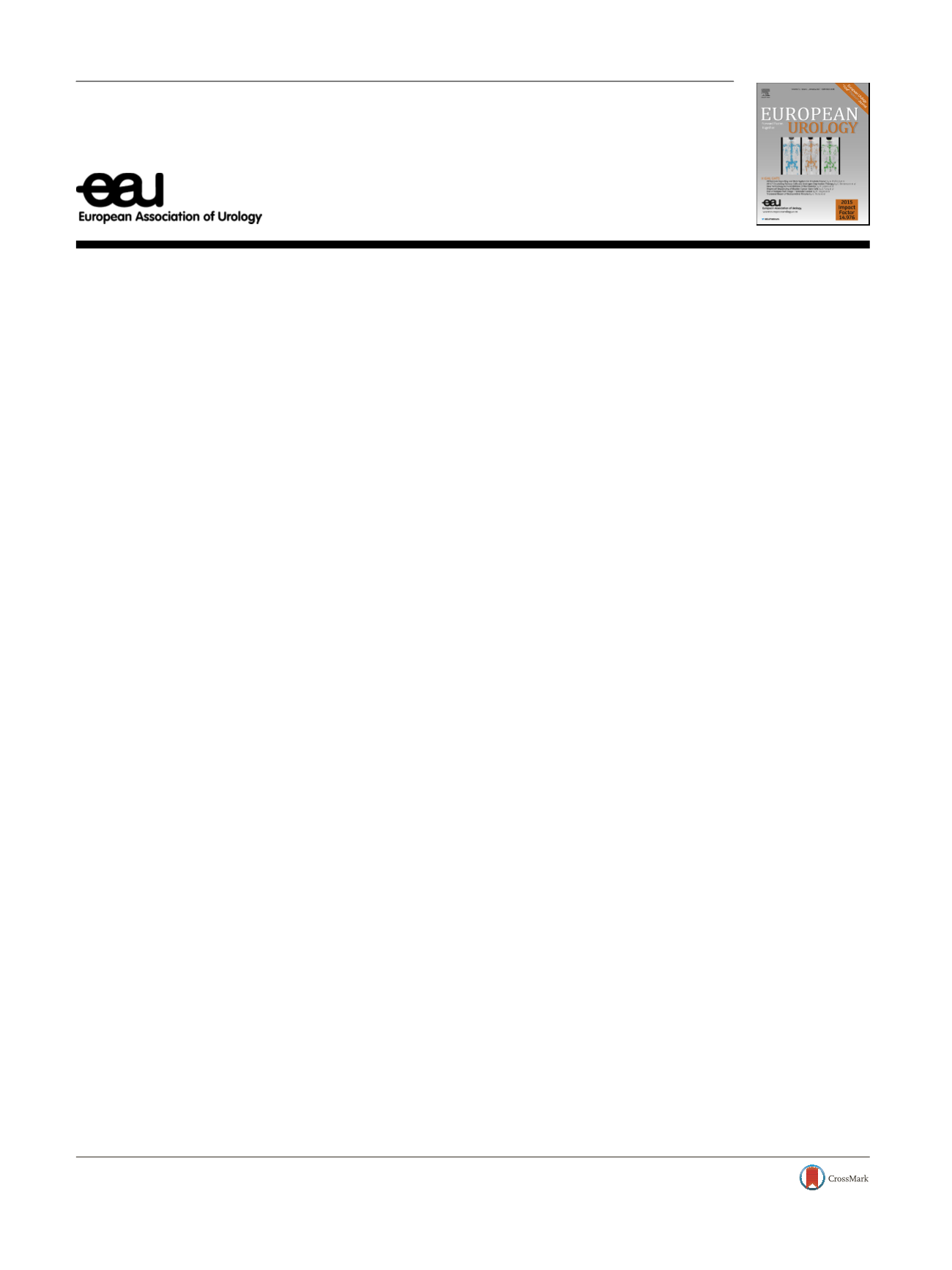

[2_TD$DIFF]
Letter to the
[3_TD$DIFF]
Editor
Re: Sumanta K. Pal, Guru Sonpavde, Neeraj Agarwal,
et al. Evolution of Circulating Tumor DNA Profile from
First-line to Subsequent Therapy in Metastatic Renal
Cell Carcinoma. Eur Urol 2017;72:557–64
Pal and coworkers
[1]identified changes in the circulating
tumor DNA (ctDNA) profile in patients with metastatic
renal cell carcinoma (mRCC) and ctDNA fluctuations during
first-line and post first-line targeted therapy using a
HiSeq2500 sequencing system. To little surprise, a high
yield of genomic mutations (79%) was observed in this
heterogeneous enrichment malignancy, with gene muta-
tions of
TP53
(35%),
VHL
(23%),
EGFR
(17%),
NF1
(16%), and
ARID1A
(12%). The results indicate a significant increase in
mutation frequency in mRCC patients receiving targeted
therapy for subsequent therapeutic lines when compared
to first-line treatment, especially for
TP53
(49% vs 24%),
VHL
(29% vs 18%),
NF1
(20% vs 8%),
EGFR
(15% vs 8%), and
PIK3CA
(17% vs 8%). This largest study to date on ctDNA in mRCC
revealed that liquid biopsy has promise for guiding
targeted therapy. However, we feel that these results
deserve to be reconsidered with a view to revealing hidden
information behind this methodologically well-conducted
study.
Initially, the authors concluded that the frequency of
ctDNA mutations was higher in the post–first-line than in
the first-line setting. From basic principles, it is known
that the level of ctDNA mutations in the bloodstream is
determined by both release from tumor cells undergoing
necrosis, apoptosis, and active secretion, and engulfment
of scavenger cells such as macrophages
[2]. However, a
subtle fact is that VEGF inhibitors could induce apoptosis
of renal cancer cells
[3] .Hence, there is a great possibility
that the increase in mutation frequency partly results
from an increase in release caused by the inhibitor itself
rather than real changes in the tumor, and this probably
accounts for a considerable portion because of the large
tumor burden in mRCC. Moreover, mTOR inhibitors,
another major class, are responsible for induction of
macrophage inhibition, and even selective macrophage
death
[4]. This apparently indicates that a decrease in
phagocytosis, as another confounding factor, may also
affect the mutation frequency. Therefore, the increase in
mutation frequency could possibly be an ‘‘illusion’’ and
might not totally reflect real levels of ctDNA, which seems
to be ignored by the authors, and new mutations may be
relatively more instructive.
In addition, a recent study suggested that the liver and
kidney are also involved in clearance of ctDNA
[5] .Thus, we
recommend that the authors reanalyze their data and
consider intrinsic clearance and the glomerular filtration
rate, which were not taken into account in their study, to
obtain more comprehensive findings.
Furthermore, mutations for three significant genes,
PBRM1
,
BAP1
, and
KDM5C
, are potentially associated with
outcomes for crossover of targeted therapy according to a
previous study
[6], but these are not included in the
Guardant360 testing system. This disparity may introduce
bias when urologists use the Guardant360 platform to test
for ctDNA in mRCC.
In general, despite the merits of ctDNA in overcoming
heterogeneity via a scalpel-free method with real-time
analysis, many impact factors need to be taken into
consideration for use in clinical practice, especially for
guiding targeted therapy in mRCC patients.
Conflicts of interest:
The authors have nothing to disclose.
References
[1]
Pal SK, Sonpavde G, Agarwal N, et al. Evolution of circulating tumor DNA profile from first-line to subsequent therapy in metastatic renal cell carcinoma. Eur Urol 2017;72:557–64.[2]
Holdenrieder S, Nagel D, Schalhorn A, et al. Clinical relevance of circulating nucleosomes in cancer. Ann N Y Acad Sci 2008;1137:180–9.
[3]
Xin H, Zhang C, Herrmann A, et al. Sunitinib inhibition of Stat3 induces renal cell carcinoma tumor cell apoptosis and reduces immunosuppressive cells. Cancer Res 2009;69:2506–13.[4]
Martinet W, Verheye S, De Meyer GR. Everolimus-induced mTOR inhibition selectively depletes macrophages in atherosclerotic pla- ques by autophagy. Autophagy 2007;3:241–4.[5]
Yu SC, Lee SW, Jiang P, et al. High-resolution profiling of fetal DNA clearance from maternal plasma by massively parallel sequencing. Clin Chem 2013;59:1228–37. E U R O P E A N U R O L O G Y 7 2 ( 2 0 1 7 ) e 1 8 0 – e 1 8 1available at
www.scienced irect.comjournal homepage:
www.europeanurology.comDOI of original article:
http://dx.doi.org/10.1016/j.eururo.2017.03.046.
http://dx.doi.org/10.1016/j.eururo.2017.07.0090302-2838/
#
2017 European Association of Urology. Published by Elsevier B.V. All rights reserved.
















